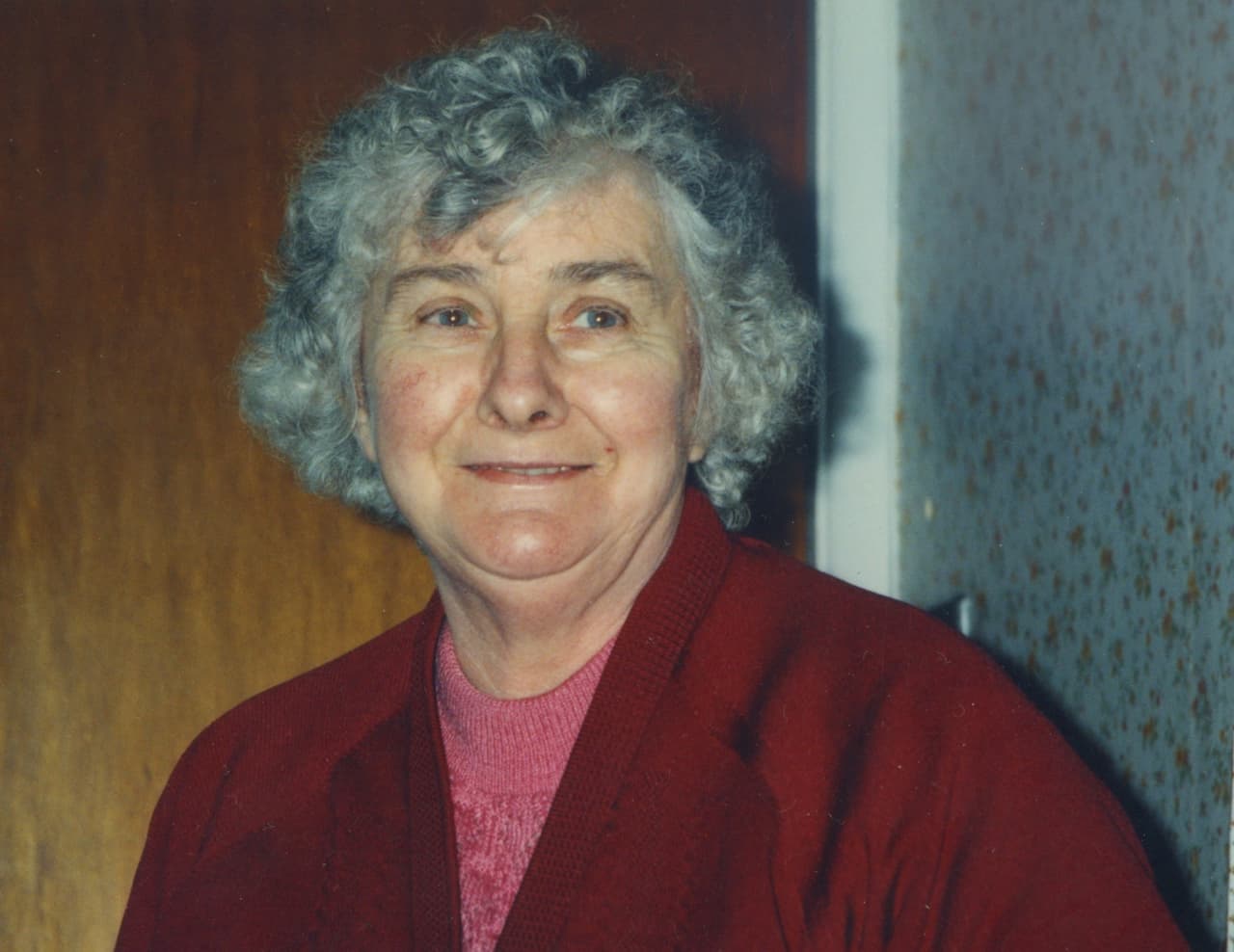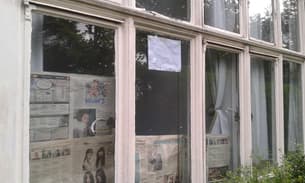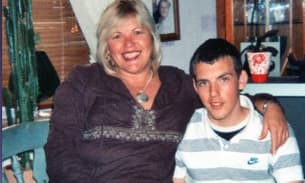
Care home regulator fails to act on coroner death warnings
Barbara Cooke who died in 2014
England’s care home regulator has repeatedly failed to act on official warnings from coroners in cases where elderly residents have died unexpectedly, the Bureau of Investigative Journalism has found.
The Bureau has examined 23 cases in which coroners warned that people could die in future if care providers did not make changes.
In more than half of these cases, the Care Quality Commission (CQC) has not inspected the homes and agencies since the deaths occurred or has not done so until long afterwards.
It raises questions over the effectiveness of a process introduced two years ago requiring coroners to file official documents known as “action to prevent future deaths” reports when they identify a risk of another death occurring if action is not taken.
When presented with the Bureau’s findings, the CQC’s chief executive David Behan said: “I am not going to defend the indefensible”. But he insisted improvements were being made.
She was shouting with pain… she told me she wanted to die – Simon Cooke
One of the most shocking cases examined by the Bureau concerns an elderly woman who died of septicaemia in spring 2014 after her care home failed to obtain medical attention for her infected pressure sores.
After the inquest the coroner produced an official document known as an “action to prevent future deaths” report – a process introduced in July 2013 – which was sent to the CQC. The report highlighted inadequate staffing, poor infection control and other issues at the home.
But the watchdog did not carry out an inspection until a year after the death and six months after the coroner’s report was completed. The CQC’s own report, which was not published for another three months, rated the home unsafe. Infection control was still inadequate and staff had still not been trained on care of residents’ skin.
In another case, a coroner found nursing home staff had failed to recognise that an elderly lady was “acutely unwell” because they were not properly trained. After she died in August 2013 the home also failed to properly investigate and wrongly told the CQC that internal protocols had been correctly followed when they had not, according to the coroner’s formal report.
The coroner’s report, which was completed in January 2014, was sent to the CQC. The home has not been inspected since. It was last inspected in May 2013, when it received a positive score on all counts, including staff training.
The Bureau’s findings raise questions about whether the CQC is taking into account coroners’ remarks when deciding on when to inspect homes and what to look for during the inspections, and about how the watchdog responds to unexpected deaths.
Common themes emerging from the coroners’ reports examined by the Bureau since 2013 include care home staff failure to recognise that residents on blood thinning drugs such as warfarin are more vulnerable to bleeding after a fall and lack of staff training in first aid and resuscitation.
The regulator’s failure to inspect also means the public may be unaware that a resident has died in controversial circumstances while being looked after by the home or agency they are considering for themselves or relatives.
They have to rely on the CQC website for information about care provider standards as there is no comprehensive alternative.
PREVENTION OF FUTURE DEATHS
Homes are under a statutory obligation to tell the CQC about any unexpected deaths and other serious incidents that occur on their premises.
There were 13,816 unexpected deaths in care homes reported to the regulator in 2014.
Homes are also expected to keep the watchdog informed of the conclusions of subsequent inquests and other investigations into incidents, such as local safeguarding inquiries.
In addition, coroners are under a duty to write reports on action to prevent future deaths if they identify risks during inquests that might place people at risk.
The Bureau has identified 23 reports in which a person has died unexpectedly since July 2013 and the coroner has gone on to advise a care home or agency in England to take action to prevent another death occurring.
Action to prevent death reports are sent to the homes concerned and are also published in a list on the Courts and Tribunals website, which is administered by the Ministry of Justice.
Despite this nine of the 23 homes and agencies were last inspected before the deaths occurred up to two years ago. There is no indication on the CQC website that they have been visited since.
In a further two cases the homes were not inspected until long after the deaths, and six months after the coroner’s report was completed.
The CQC was formally sent a copy of the coroner’s report in six of these 11 cases.
In another case, the CQC inspected the home in the two months between the unexpected death in September 2014 and the coroner completing a formal report in November. The CQC did not mention the recent death in its review and there is nothing in its findings to show that inspectors had checked whether issues subsequently raised by the coroner had been addressed. The inspectors have not returned to the home following the coroner’s report.
The Bureau found four further cases where the homes were inspected within a few months of the coroner’s report. But in none of these cases did the CQC reports mention either the inquest or whether the inspection had checked to see if the coroner’s concerns had been addressed.
In the remaining seven cases providers had been inspected promptly after the coroners’ warnings and it is clear in the CQC reports that the issues raised had been looked into.
The CQC is not obliged to inspect in every case, but has a range of options in responding to a coroner’s warning notice, such as reviewing any proposed action plans from the care home in question, meeting with them to discuss action taken, and agreeing action with others such as local safeguarding teams. However the public will not be aware of any action short of an inspection, as only the results of inspections feature on the CQC website.
No CPR was undertaken by the staff when the deceased collapsed – coroner’s report on death of Noreen Porter at BUPA Ardenlea Grove nursing home
David Behan, Chief Executive of the Care Quality Commission said that since the cases had arisen the commission had undertaken a review of its procedures and was now working with coroners to ensure that all warnings were promptly acted upon and came to one central point in the organisation.
“We are not pretending we have got this cracked. We are radically changing the way in which we regulate health and social care in this country. Have we finished that task? No we haven’t. We have got more to do.”

In December 2014, a dedicated CQC “inquests and coroners” email inbox was set up for all coroners’ correspondence, which was sent to inspectors with responsibility for the location, she added, while staff had been given additional training on coronial investigations.
From April 1, 2015 the CQC also took over responsibility for health and safety incidents in health and social care settings.
A spokeswoman for the regulator said, “These improvements will ensure we take prompt action following a death notification … this should mean that concerns within a service are identified and acted upon before the inquest concludes.”
Eileen Chubb, founder of campaigning charity Compassion in Care, said: “In our experience the CQC loses vital information in its systems all the time. We get a huge amount of information coming in that needs acting on immediately and we are a small organisation with a tiny budget. The CQC does not seem to be capable of dealing with all the intelligence it receives.”
Judy Downey, chair of the Relatives and Residents Association, which supports care home residents and their families, said the lack of rigorous follow-up by the CQC after an incident or unexpected death occurred “continues to be a huge cause for concern”.
Since July 2013 coroners have been under a duty to write reports on action to prevent future deaths if they identify risks during inquests that might cause deaths in future. The duty, which replaced a discretionary power, was introduced to improve consistency among coroners’ responses to avoidable risks. However the picture across the country remains mixed, with some coroners producing numerous reports and others none. Some coroners have decided not to write a report even when a care home has been severely criticised at inquest. For example, 93-year old Elsie Clarke died at Hurst Hall care home in February 2015 after staff failed to call an ambulance despite her becoming “desperately ill”. At her inquest the South Manchester coroner recorded a narrative verdict. He was reported by the BBC as saying opportunities had been missed and that parts of Mrs Clarke’s care were sub-optimal, but did not produce an action to prevent deaths report. The Bureau asked the South Manchester coroner’s office why no action to prevent death report was issued but it did not provide a response. The CQC website says that the home was last inspected in November 2013 when it was “caring for people safely and protecting them from harm”. A spokeswoman for Meridian Healthcare, which owns Hurst Hall, said: “Over recent months we have liaised with all relevant authorities to thoroughly review what took place. We have taken on board the feedback from the coroner, and have fully implemented the actions he recommended.”
THE UNINSPECTED
The Cases
1. Waxham House, Isle of Wight

One shocking case centres on the death in April 2014 of 84-year-old Barbara Cooke, who a coroner concluded had died of “natural causes contributed to by neglect”.
Isle of Wight resident Mrs Cooke was a deeply religious grandmother who, according to her son Simon, had resisted entering residential care when her health and mobility first began to deteriorate because she feared she might not be looked after properly.
But it became increasingly obvious she could not cope at home and after a spell in hospital she was moved to Waxham House, a 20-bed care home on the Isle, in August 2012.
At first the care she received seemed fine.
But in an action to prevent deaths report, the coroner said that by Christmas 2013 things were beginning to change.
The inquest heard how her son had raised concerns that she was not being bathed often enough. By then Mrs Cooke had become doubly incontinent and as she suffered from a condition, psoriasis, that causes broken skin, she was at increased risk of infection.
On January 7 2014 the home was inspected by the CQC, which gave the home top marks for “cleanliness and infection control”. Staffing levels were not scrutinised as part of the inspection.
By February 2014 Mrs Cooke was complaining of a sore bottom and her son noticed some other residents were being left for an hour before being taken to the toilet.
A month later, on Mother’s Day, Simon Cooke visited the home and found his mother in a distressed and soiled state, with faeces on her face, asking to be taken to the toilet. At the same time, he noticed another elderly female resident was struggling to breathe.
On April 1 the care home manager filled out a “body map” of Mrs Cooke showing pressure sores on her left buttock. According to the coroner’s report Mrs Cooke’s GP was not told about the sores and neither was her son.
The home said it called the district nurse that day and left a message asking her to visit Mrs Cooke. But the district nursing service told the coroner it had no records of any such call. In any case, the care home did not follow up the call.
On April 7 Mrs Cooke was admitted to hospital suffering from two “grade 4” pressure sores with “full thickness necrosis of the tissue” – the worst possible type of sore – and sepsis.

“She was shouting with pain before she went in,” says Mr Cooke. “She told me she wanted to die.”
Barbara Cooke did die, a few days after admission, of septicaemia, infected pressure sores and multiple organ failure.
Neither the home nor hospital referred the death to the coroner. The matter only came to the coroner’s attention because Mr Cooke raised concerns over what had happened while he was trying to register his mother’s death, and the registrar referred the case for investigation.
In an action to prevent future deaths report, which was sent to the CQC in September 2014, the coroner said the home was inadequately staffed and there was a risk that future deaths would occur unless action was taken. She also highlighted staff failures to chase up medical attention for Mrs Cooke’s pressure sores.
The CQC was named by the coroner as one of the bodies required to respond to the report.
The watchdog told the Bureau it had submitted a written response to the coroner. This has not been published.
The CQC did not then inspect the home until six months later, in March 2015.
The inspection report, which was not published until June 2015, found that care provided at Waxham House was not safe and parts of the home had not been cleaned properly.
“The providers did not arrange training in the care of people’s skin when this had been clearly identified as an area of concern,” its report said.
Mr Cooke told the Bureau: “I don’t understand why it took so long for the CQC to go in there. And to find that the staff were still not being trained properly – it’s unbelievable.”
A spokesman for Waxham House said the home had learned lessons since Mrs Cooke’s death. “We are working closely with the CQC and the local authority safeguarding team,” he added.
2. St Mary’s Nursing Home, Harborough Magna
Staff at St Mary’s Nursing Home in Harborough Magna, Rugby, failed to recognise an “acutely unwell resident” as they were not properly trained. The home also failed to properly investigate after the death and wrongly told the CQC that internal protocols had been correctly followed when they had not.
Those were the conclusions of the coroner for Coventry after reaching a narrative verdict on the death of 76-year-old Mary Waldron on August 24 2013. She had suffered a cardiac arrest.
The coroner also raised concerns over a “lack of clarity” over a CQC investigation into the death as the home gave evidence that this had closed but the family believed it to be ongoing.
The coroner’s report, which was completed in January 2014, required a response from the CQC. The watchdog said it had submitted a response, although this has not been published.
St Mary’s has not been inspected since the death. The home was last inspected by the CQC in May 2013, when it received a positive score on all counts, including staff training.
The Bureau contacted the home to ask for comment, but none was forthcoming.
3. Lapal House and Lodge Care Home, Halesowen
85-year old Stanley Ward died after falling at Lapal House and Lodge Care home, in Halesowen, West Midlands, in November 2014. Mr Ward, who was taking warfarin, a drug given to many elderly people to prevent blood clots and strokes, was put to bed after the fall without a referral to doctors despite him telling staff that his wife had always called paramedics when he had fallen previously.
The following morning he was found unresponsive. He was taken to hospital, where it was found that he had suffered a “devastating head injury”, which led to his death 12 days later. The coroner found that the warfarin had exacerbated bleeding from the injury.
In his action to prevent death report, completed in February 2015, the Black Country coroner said that care home staff were unaware that warfarin increases the risk of bleeding even where there are no visible injuries. There was also no clear policy on referring patients for medical attention after falls.
The coroner asked the CQC to respond to the report, and the watchdog confirmed a response had been submitted.
Lapal House was last inspected by the CQC in November 2013 – a year before Mr Ward’s death – when it passed with a “good” rating on all counts.
Michelle Upperdine, the home’s care manager, told the Bureau: “There were no signs [of concern] at the time of the fall otherwise the paramedics would have been called without delay.
We have however amended our policy for all residents on warfarin therapy and staff have now been informed in these cases to dial 999 immediately.”
4. Berrycroft Manor, Romiley
Sidney Barnett, who had dementia, died of pneumonia in January 2015. On December 21 2014 his relatives found him in his room at Berrycroft Manor in Romiley, Cheshire, without socks and with the remnants of his dinner down his front. He was trying to eat a bowl of custard, alone and unattended.
The following day his visitors found him sitting beside an open window in the cold and wearing a T-shirt. Later the same day he was seen by a district nurse who immediately arranged for him to be admitted to hospital. He died 12 days later.
The coroner concluded he had died of natural causes. But in an action to prevent future death report he raised concerns over inadequacies in the level of the home’s observation and general quality of care of Mr Barnett, as well as over the home’s policy whereby the cleaner “opens the windows, whatever…”. He copied his report to the CQC.
Berrycroft Manor has not been inspected by the CQC since Mr Barnett’s death. Its last inspection was in May 2014, when it was found to be performing well on all counts.
The Bureau contacted Berrycroft Manor but was told that the home did not wish to comment.
5. Appleton Lodge, Stockport
Maria Silkin, 87, died in September 2014 shortly after falling at Appleton Lodge care home, Stockport. She broke her hip in the fall but was not taken to hospital for a week. She died of pneumonia and surgical site infection following an operation.
The coroner, who reached a verdict of accidental death, heard evidence that Ms Silkin had fallen “numerous times” before. Despite that, the “falls history” in the home’s risk assessment of Ms Silkin indicated she had suffered no previous falls.
The decision to take her to hospital had been delayed as a result of this, the coroner concluded in an action to prevent future deaths report completed in May 2015, which was copied to the CQC.
Appleton Lodge, which belongs to care home chain HC-One Limited, was last inspected by the CQC in September 2013, a year before Ms Silkin’s death, when it was given a good rating on all counts. The home’s profile on the HC-One website directs users to the CQC report.
A spokesperson for HC-One said: “We immediately implemented action plans to address the coroner’s feedback. This included, where appropriate, staff retraining, a review and strengthening of internal processes, and putting in place additional safeguarding measures. We also wrote to the coroner to confirm the actions we had taken once completed.”
6. John Stanley’s Care Agency, Hornchurch
Michael Lyons choked to death while eating at home in September 2014.
The verdict of the coroner for East London was accidental death. But in an action to prevent death report that was copied to the CQC, she found that when the agency looking after him at home, John Stanley’s Care Agency, “was first engaged, information was provided to them about Mr Lyons’ difficulty with swallowing”.
In June 2014 a speech and language therapist recommended Mr Lyons’ food should be cut into small pieces and provided a list of “high risk” foods, including toast.
The recommendations were not reflected in Mr Lyons’ care plan although the coroner found the agency knew the assessment had been carried out. In September 2014, Mr Lyons’ carer prepared cheese on toast for him. She did not cut it up and left him to eat unsupervised. He choked on the toast and died.
The CQC website says that John Stanley’s Care Agency was last inspected in January 2014 – eight months before his death – and was “caring for people safely”.
A spokesperson from the agency said: “We can confirm that at no time whatsoever had John Stanley’s Care Agency Ltd been informed by Havering Social Services that Mr Lyons was at risk of choking and in need of supervision whilst eating.”
7. Hazelbrook Christian Nursing Home, Bolton
Emmeline Hampson, 91, died on November 6, 2014, from a head injury following a fall at her care home in Bolton a week earlier. An inquest concluded she had died as a result of an accidental fall exacerbated by the blood-thinning drugs she was taking.
In an action to prevent death report completed in March 2015, the coroner for Manchester West found Mrs Hampson’s general condition and mobility had deteriorated in the month before she died.
But despite suffering five falls in four weeks, including the tumble that killed her, staff at Hazelbrook Christian Nursing Home did not review her risk assessment or refer her to the local falls prevention service.
The coroner found the home’s records did not reflect her falls or the changes in her condition and a nurse who gave evidence at the inquest “did not appear to be familiar with the documentation and record keeping” in relation to risk assessments. The alarm system in the home did not distinguish between an alarm activated by sensors as a result of a fall and an ordinary request for assistance.
The coroner recommended that the home review staffing training, its procedures relating to risk assessments and record-keeping and its alarm system.
The CQC last inspected the home in October 2014, a week before Mrs Hampson’s final fall, and gave it a “good” rating on all counts.
A spokesman for Hazelbrook said: “The home has policies and procedures to follow and prevent falls – all of these were followed and documented.”
8. Home Instead Senior Care (High Peaks)
Mary Hallworth, a “frail, elderly lady” of 98, died after a fall from her bed at home in March 2014. She was found on the floor and complaining of pain by a carer from Stockport company Home Instead Senior Care (High Peaks). The carer left her, without seeking medical attention for her, after Miss Hallworth’s friend arrived and put her to bed. She subsequently died of bronchopneumonia and a fractured left hip.
The coroner recorded a verdict of accidental death. But in a report completed in November 2014, the coroner noted that “despite the deceased being in pain and having fallen no medical attention was sought or considered for a period of 24 hours,” and that future deaths could occur unless action was taken.
The care provider was last inspected by the CQC in January 2014, a few months before Miss Hallworth died, and received a “good” rating on all counts.
Trevor Brocklebank, chief executive of Home Instead Senior Care, said: “If any of our clients fall or injure themselves, our policy is that the emergency services should always be contacted.”
This was an “exceptional case”, he added, as the carer had acted on the wishes of the family, which were that Miss Hallworth’s friend, a district nurse, should be the first contact in the event of a fall.
The friend had concluded that contacting the emergency services was unnecessary, he added.
“In response to the coroner’s request, we have reminded all our regional offices to re-iterate our policy to their employees that should they find that a client has fallen emergency services should be called.”
9.Westwood Homecare (North West)
Walter Willows choked on a crumpet and died while eating at home in October 2014. The inquest concluded he had died an accidental death. The South Manchester coroner found that the provider responsible for his care, Westwood Homecare (North West) Limited, had not adjusted Mr Willows’ diet to reflect his ability to swallow.
Care plans, which included feeding regimes, were only updated every three months and should have been looked at “far more frequently”, the coroner said. Doing so would prevent future deaths, he added.
The CQC last inspected the homecare service in October 2013 – a year before Mr Willows’ death – and passed it on all counts.
The Bureau contacted the service to ask if anyone wished to comment, but no-one was available.
10. Marbury House, Stockport
82-year old Doris Taylor was knocked over by a door at Marbury House care home in Stockport due to a defective mechanism for closing the door. She suffered three separate falls during a stay at the home of less than two months. She fractured her leg in one of these falls and subsequently died in late 2013.
Recording a verdict of accidental death, the South Manchester coroner noted that a senior member of staff had not received training on reporting of incidents to the Health and Safety Executive. The coroner also recommended that door-closing mechanisms should not be so “strong” as to be able to knock someone over.
Marbury House has not been inspected by the CQC since Ms Taylor’s death.
The home was inspected in September 2013 but there is nothing in the report of that inspection to suggest that the lack of staff training on HSE incident reporting was identified.
Kathryn Farmer, chief executive of Borough Care, which owns Marbury House and a chain of other care homes, said: “This incident was investigated thoroughly in 2013 and the arising issues were promptly addressed. Our actions are on record. We welcome the CQC’s inspections at any time they choose at all Borough Care homes.”
11. Ardenlea Grove Nursing Home, Solihull
Noreen Porter, 69, died at BUPA’s Ardenlea Grove nursing home in Solihull on September 18, 2014. She had choked on food while being fed. Nobody had attempted to perform CPR on her, and by the time paramedics arrived she was dead. Pathology evidence confirmed she had died of choking due to the food in her windpipe.
In an action to prevent death report completed on November 22 2014 the coroner for Birmingham and Solihull said “no CPR was undertaken by the staff when the deceased collapsed” and that the home had no procedures in place to ensure that resuscitation was undertaken when an emergency occurred.
The CQC last inspected Ardenlea Grove on November 6 2014 and concluded that the home was safe. The inspectors did not return following publication of the coroner’s report. There is nothing in the report of their own inspection to show that resuscitation procedures had been checked.
A spokeswoman for BUPA said the home had immediately notified the CQC and coroner. “We checked all of our procedures for life support at the home,” she said.
“Despite all of our staff knowing our CPR procedure, it was not followed, so we delivered extra training and focused supervisions with all staff on when it must be used.”
Suction machines had also been bought for each floor of the home, she added.
12. Rush Court Care Home, Wallingford
75-year old Peter Nott, who suffered from Parkinson’s, fell and hit his head but was not taken to hospital by Rush Court care home in Wallingford until eight and a half hours later. He died a few days later on September 8 2013.
The Oxfordshire coroner recorded a verdict of accidental death. But in his action to prevent future deaths report he said that although staff were attentive to Dr Nott, “it was accepted in questioning” that they should have undertaken neurological observations rather than relying on a “simple visual examination”. The coroner also pointed out that inaccurate information about Dr Nott’s consciousness had been passed to paramedics by the care home staff.
The home was advised to review its procedures for attending residents after falls.
Rush Court had been inspected by the CQC on August 30, 2013, three days before Dr Nott’s fatal fall. The report of the inspection, which was published a month later and after his death, made no reference to the incident or the home’s procedures on falls.
Inspectors said the home was meeting all standards including “caring for people safely and protecting them from harm”.
The coroner’s report was completed in February 2014. In response, the home said it would amend its procedures by April.
The home was not inspected again by the CQC until June 2015 – almost two years after the death and more than a year after the coroner’s report. There was no reference to the concerns raised over Dr Nott’s death in the inspector’s report. The home was given an overall rating of “good” but was told it “requires improvement” when it comes to safety due to failures in medicines management.
Rush Court’s manager told the Bureau: “In response to the [coroner’s] recommendations Rush Court nursing home reviewed all procedures relating to the incident and provided additional training for staff.”
Help us investigate: The Bureau is running a long-term project on the performance and governance of care homes.
If you have a case or information that could help us with this investigation please contact Melanie Newman on [email protected].
Additional reporting by Oliver Wright




